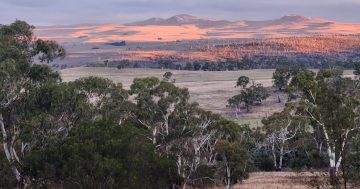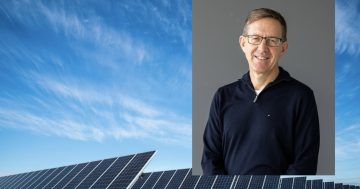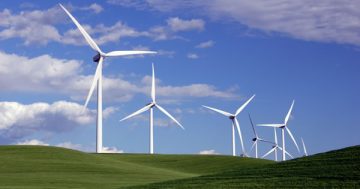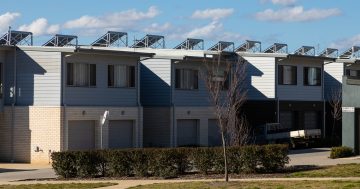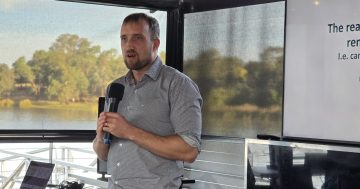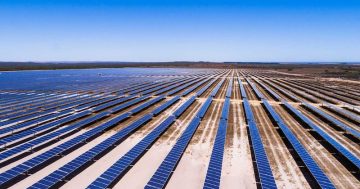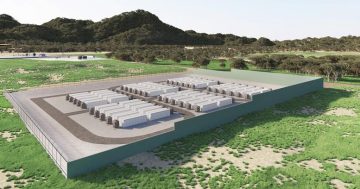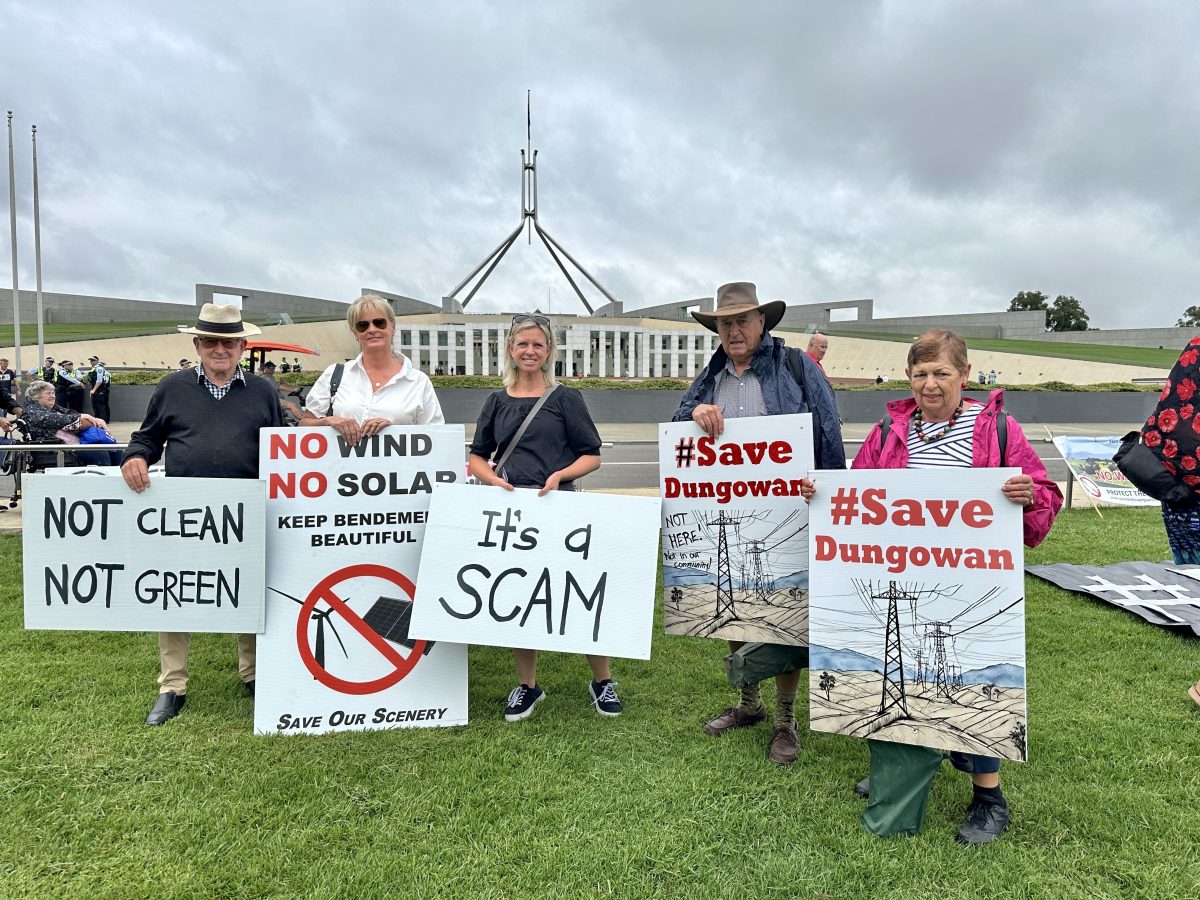
Reckless Renewables Rally attendees at Parliament House this morning. Photo: James Coleman.
“Basically, we’re opposed to the renewable energy craziness, which consists of solar factories, wind factories and associated transmission and distribution networks.
“They shouldn’t be going anywhere, but they’re going on good farming land, and there’s no actual no point to them because they do not help the wider energy problems, and they just drive up costs for everybody.”
Emma Jeffrey is among the hundreds of people converging on the lawns of Parliament House today (6 February) for the first sitting day of the year to protest the Federal Government’s renewable energy projects.
Where she’s from, Walcha in the New England region of northern NSW, the state government has set aside a ‘Renewable Energy Zone’ (REZ) stretching from above Glen Innes to near Tamworth. Through wind, solar and battery projects, it’s hoped this will eventually contribute 8 GW of energy to the national grid.
“It’s prime agricultural land,” Emma says.
“Some people are true believers and they think it’s actually helping, but if they looked into it, nothing about it is ‘green’. We’re not going to take this lying down.”
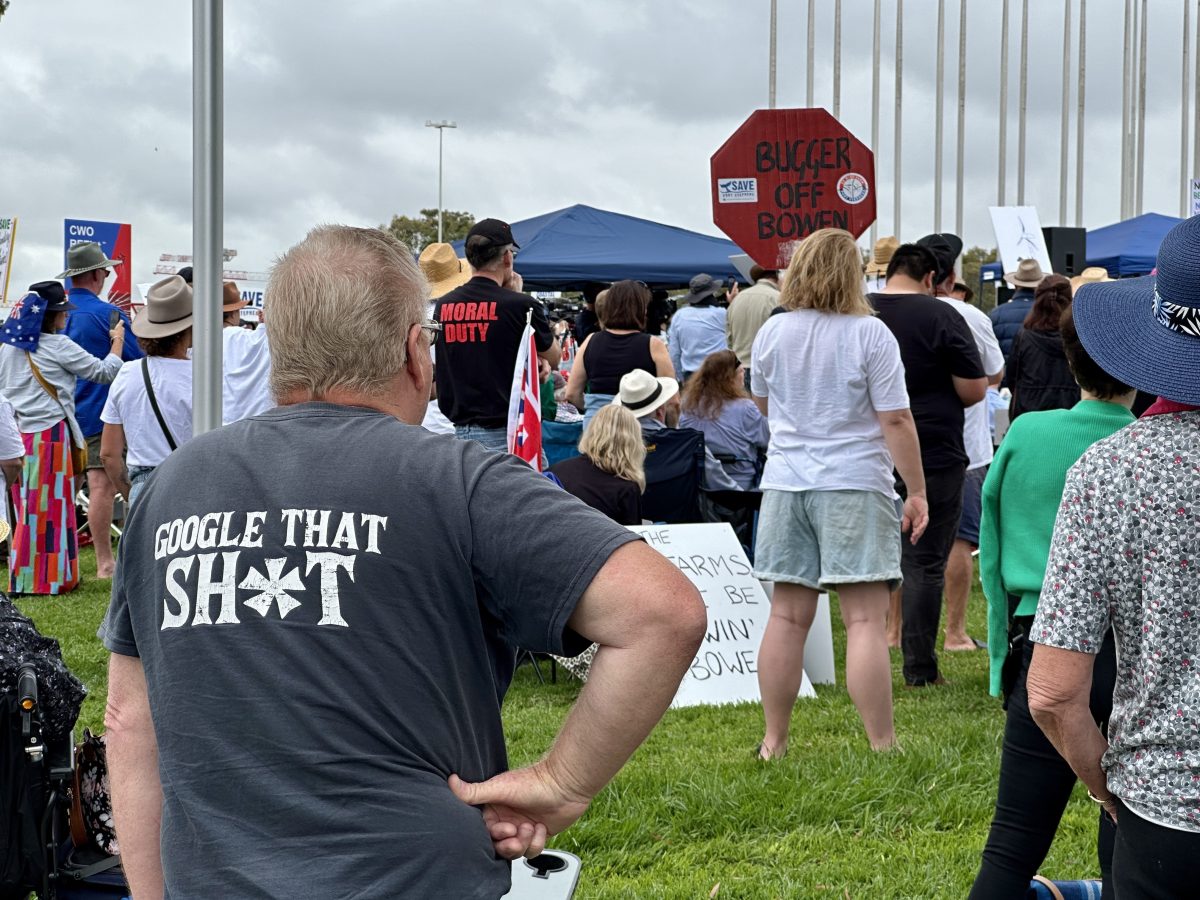
Protestors are opposed to renewables being built on prime agricultural land. Photo: James Coleman.
Howard and Jo Holgate have journeyed from Ganmain, a small farming community near Wagga Wagga, because “farming is under attack”.
“What we’re facing here is quite minor compared to most of Europe, but prime agricultural land has been taken up with solar panels and wind turbines … and it just makes no sense … We need to realise net zero is a lie,” Howard says.
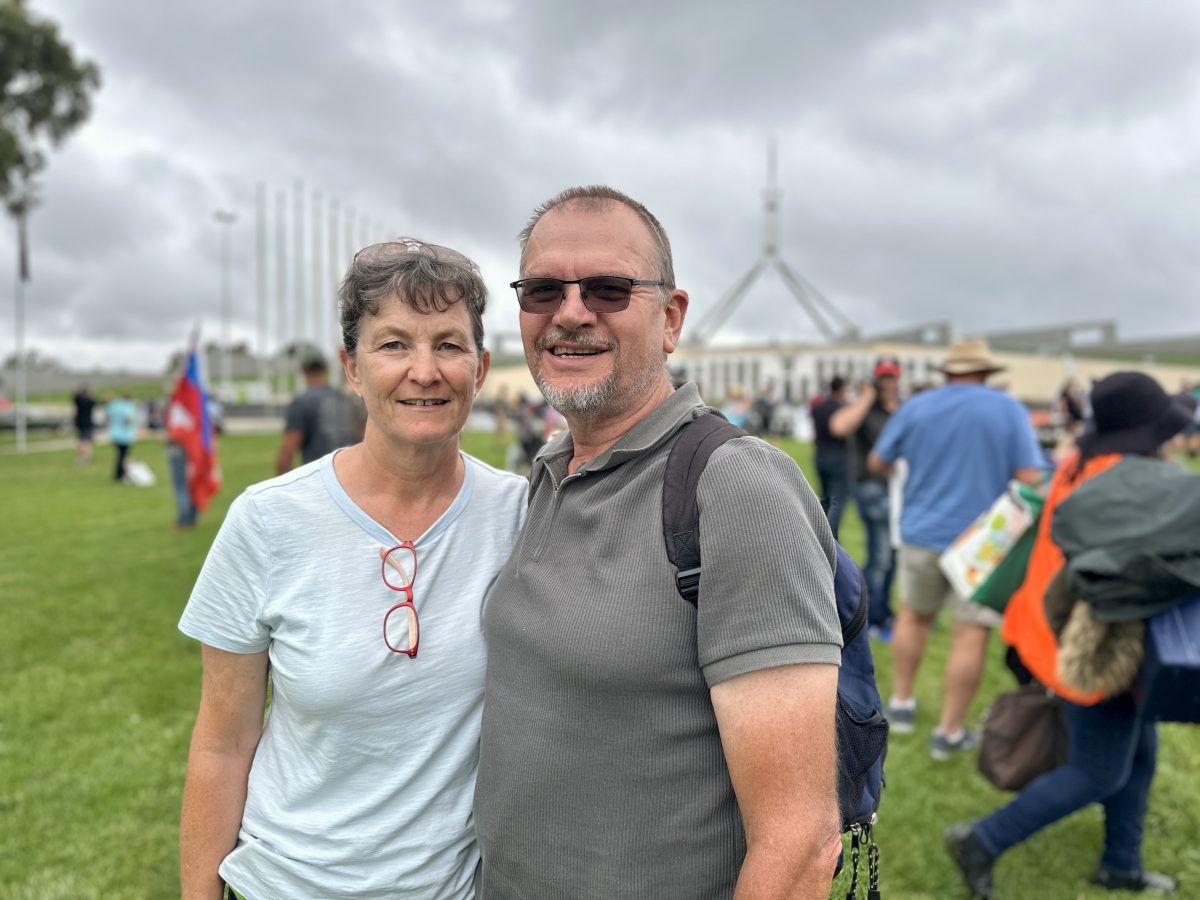
Howard and Jo Holgate drove from Ganmain in the Riverina to have their voice heard. Photo: James Coleman.
The National Rational Energy Network (NREN) organised the Reckless Renewables Rally for the first sitting day of the year. There are various factions within the group – many from the ‘Convoy to Canberra’ anti-vaccine-mandate protest in January 2022 – but the main objective is to call for a rethink of the Federal Government’s target for 82 per cent of Australia’s power to come from renewables by 2030.
They want a Senate inquiry into renewables, a suspension of all renewable energy projects and a lifting of the ban on nuclear power.
Keynote speakers at the event include Northern Territory Senator Jacinta Price, United Australia national director Craig Kelly, the Nationals member for New England Barnaby Joyce and Queensland Senator Matthew Canavan, One Nation leader Pauline Hanson and Queensland Senator Malcolm Roberts.
NREN chair Grant Piper comes from Mudgee in central NSW and has a background in engineering. He says the decrease in the amount of usable farmland due to renewables is only one reason for his opposition.
“The bigger question is, ‘Why are we doing it when it’s counterproductive?’ I mean, if you look at the whole life cycle costs of turbines and solar panels – manufacturing them and installing them is all done with fossil fuel and then they’ve only got a short life before they have to be replaced and disposed of. We can’t just say ‘the sun is free, the wind is free’ – that’s not all there is to it.”
Through the $20 billion ‘Rewiring the Nation’ program (part of the ‘Powering Australia’ plan), the Federal Government intends to “modernise our electricity grid” and “deliver affordable, reliable renewable energy to cities, towns and regional communities”.
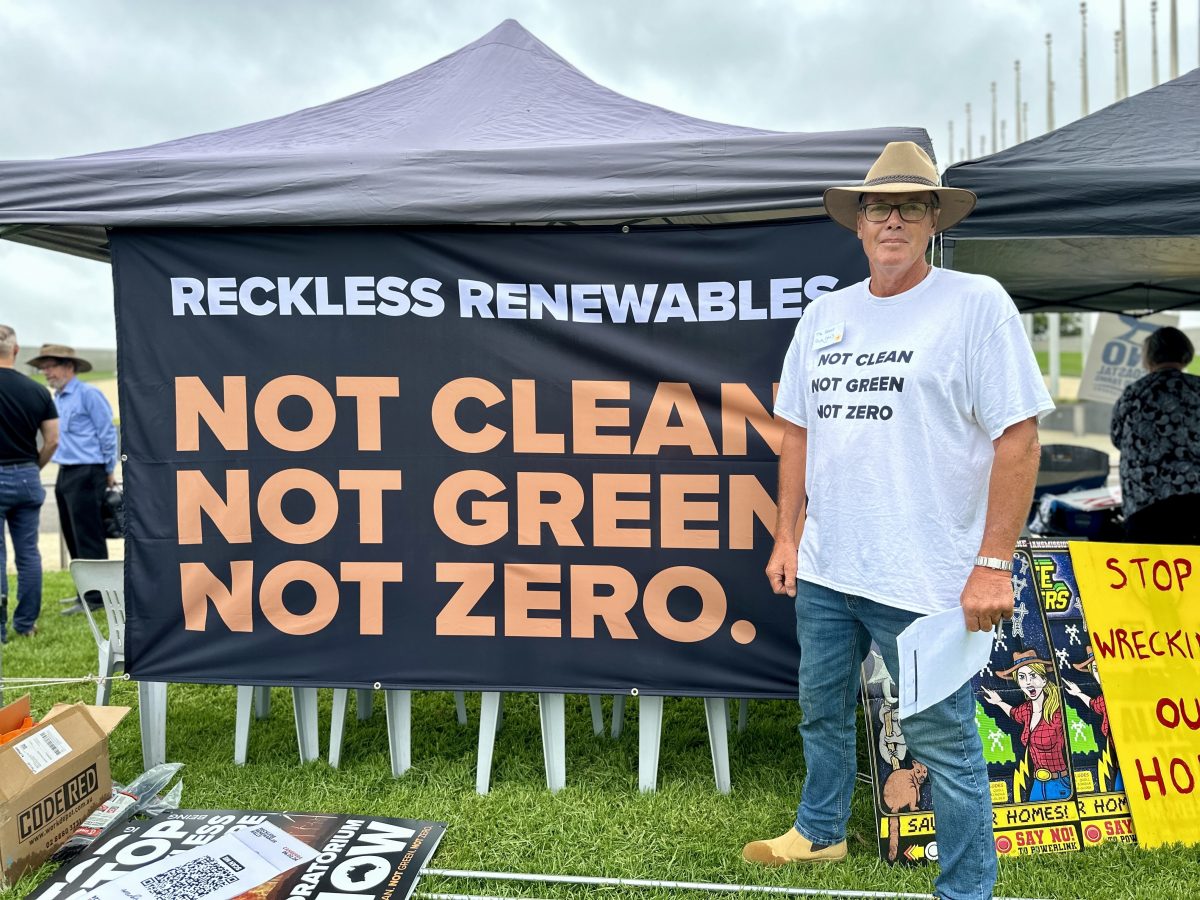
Grant Piper says the decrease in the amount of usable farmland due to renewables is only one reason for his opposition. Photo: James Coleman.
Almost all of the 1000 new projects will be located in regional communities, which feel inadequately consulted.
“In the lead-up to most of these ‘projects’, this government has conducted short, insincere, and unacknowledged community consultation,” the rally’s organisers say.
They want the government to suspend the “reckless rollout of renewables” and turn to nuclear power instead.
“Nuclear energy has the lowest overall greenhouse gas emissions of any energy source as a result of its low land footprint, low material usage, and low waste output. The current ban is archaic, restraining Australia from achieving a strong, reliable energy future.”
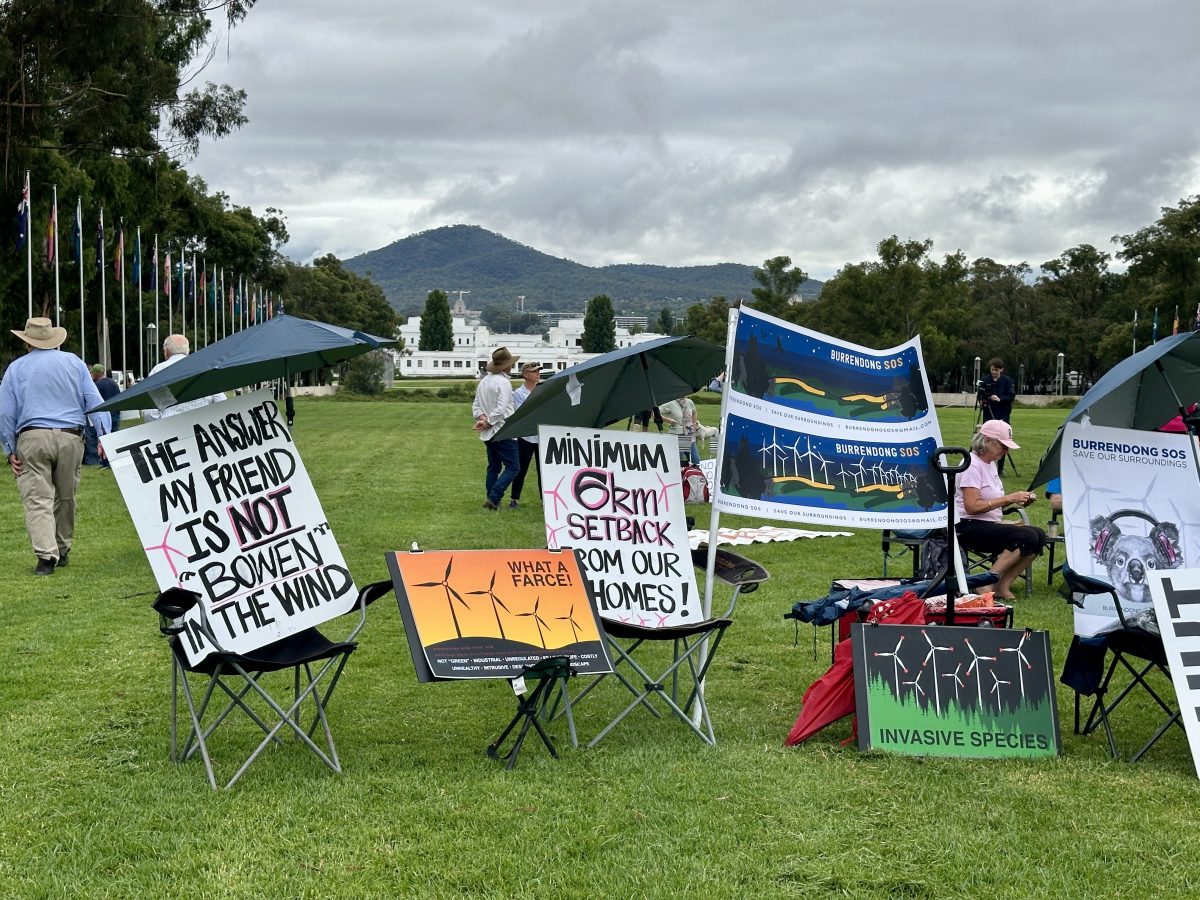
Reckless Renewables Rally signs. Photo: James Coleman.
A spokesman for Energy and Climate Minister Chris Bowen says the government is “working with regional communities and local landholders to ensure they benefit from cleaner, cheaper and more reliable energy.”
“It’s the regions that have always powered Australia that have the most to gain from this transformation and our government is helping them seize the opportunity.”
Farmers for Climate Action chair Brett Hall adds that renewable energy projects offer an alternative income source for farmers doing it tough.
“Income during drought is vital when you’re trying to run a family farm and renewable energy delivers that,” Brett says.
Typical payments offered to farmers by wind companies are now more than $40,000 per turbine per year, and many farms host dozens of turbines while still rearing sheep or cattle.”












